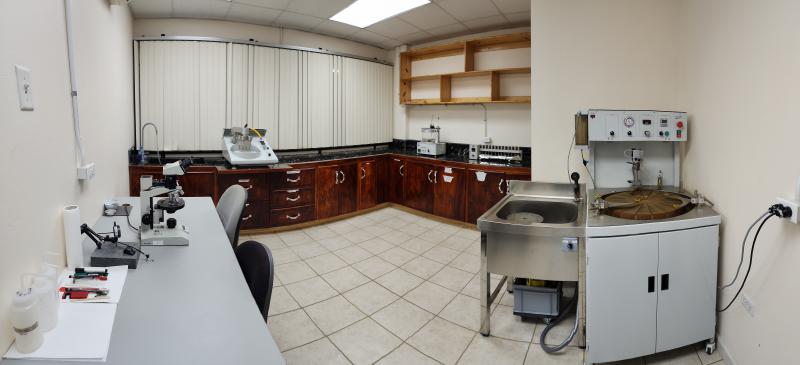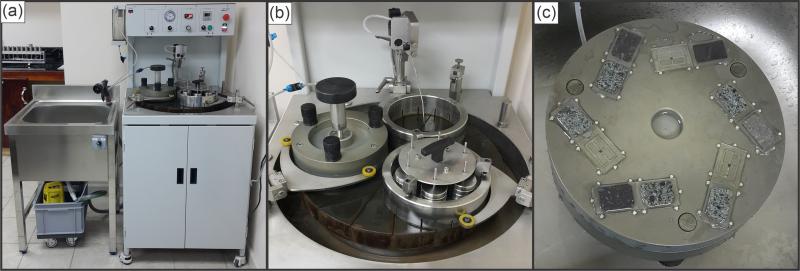The Petrographic Thin-section Laboratory uses research‐leading precision rock cutting, grinding, lapping and polishing machines in order to achieve the best possible representation of rock microstructure with rapid turnaround time.

The laboratory has a bonding jig that is used to glue squared rock faces to the glass slides. It is equipped with a small saw that is used to cut slices to approximately 800 μm. A precession end-grinder is then used to reduce the thickness of the sections. The laboratory acquired an automated lapping machine (Model LM 500) from Vinci Technologies that is used to lap up the 24 thin sections and up to 6 rock chips simultaneously. An automated polishing machine (Model AP 250) is housed in the laboratory that is used to polish up to 4 samples simultaneously, which will enable further examination (scanning electron microscopy, micro X-ray diffraction, Electron probe micro-analyzer, laser ablation inductively coupled plasma mass spectrometry, etc.). The laboratory is also equipped with a petrographic microscope for final inspection of the thin sections and for petrographic analysis. This laboratory supports the Geomechanics and Rock Physics Laboratory, where petrographic data is integrated with the geomechanical and petrophysical data.


(ABOVE) Thin section (30 μm) of samples from Trinidad’s source rock (a) and Montserrat’s geothermal reservoir (b and c).

(ABOVE) Thin sections are cut to various thickness using the small rock saw (a and b). Surfaces are ground to various thickness using the precision grinder (c and d). Up to four (4) surfaces can be polished simultaneously using the automated polishing machine (e).

(ABOVE) The automated lapping machine (a) can simultaneously lap thin sections and chips (b). Up to 12 thin sections can be held in the small thin section holder (c), while up to 24 thin sections can be held in the large thin section holder.